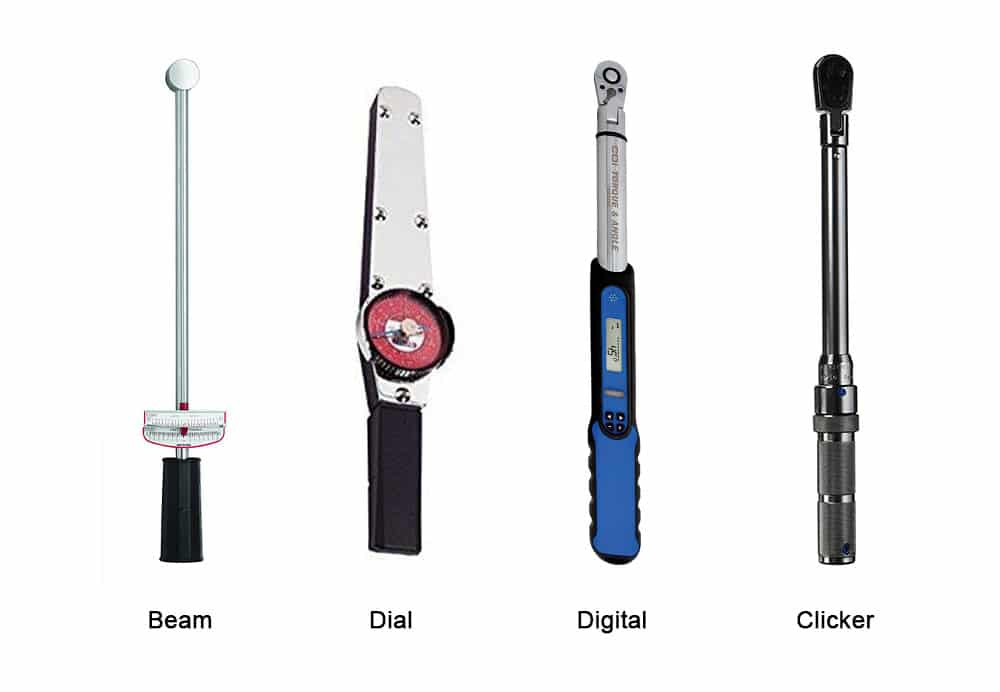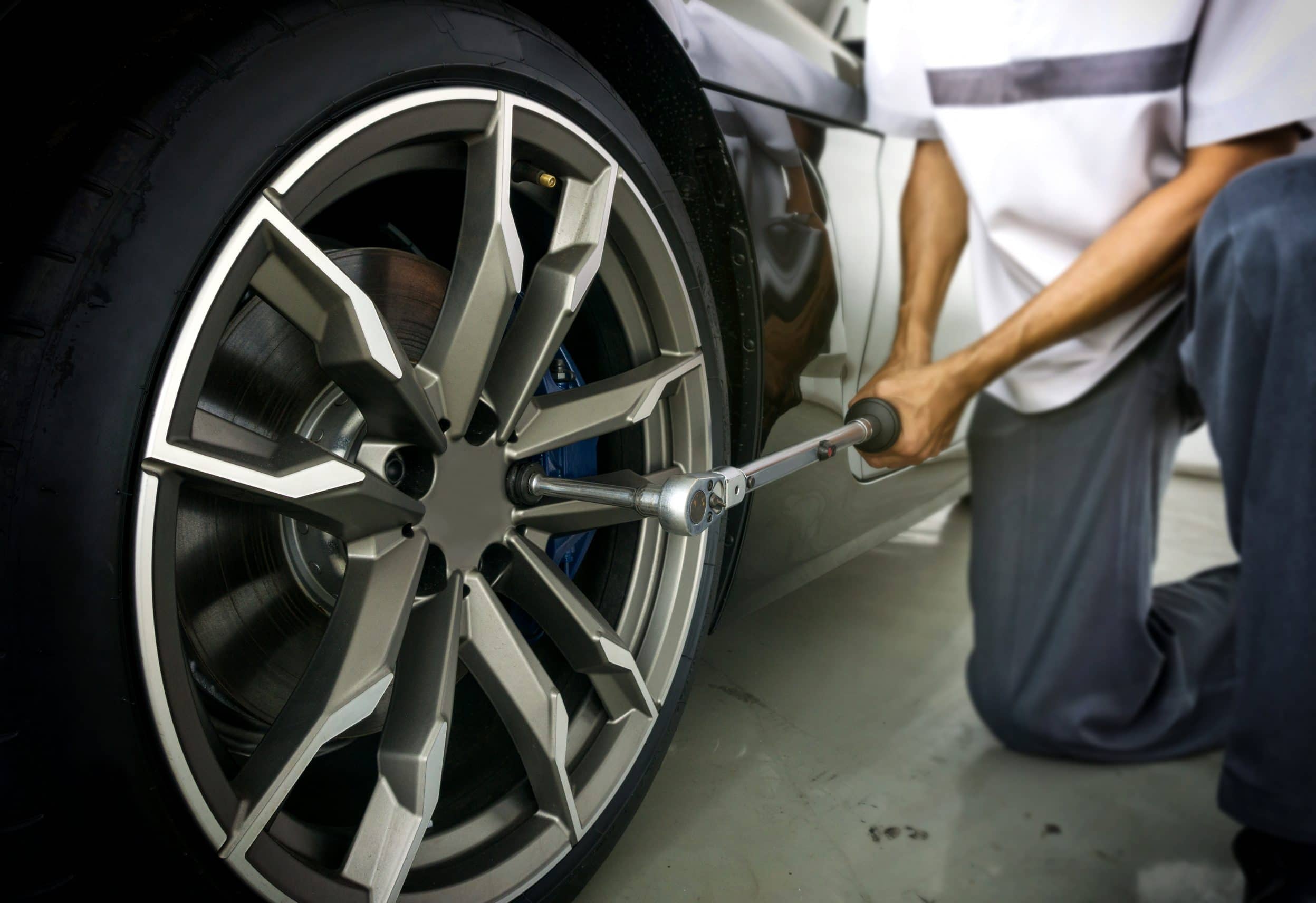Home > Learn > How To's > How to Use a Torque Wrench the Right Way
In this article: We'll walk you through how to use a torque wrench the right way so that you can rest assured your bolts and nuts are tightened properly!
When used the right way, a torque wrench ensures that nuts and bolts you install are uniformly tight to the specifications that the engineers define. Precision becomes important when you start working on complex parts that must endure rigorous use. A torque wrench measures the pressure applied to a fastener in feet per pound (ft. lb.), or Newtons per pound (Nm.) for metric applications.
The most common torque wrenches use a ½” square drive and sockets. You should use impact sockets with a torque wrench to avoid damaging sockets and fasteners. Torque wrenches are also available in ¼” and 3⁄8” drive for use when you are assembling more delicate parts. When you need to torque down seriously beefy stuff, you will need to get ahold of a ¾” or even a 1” drive torque wrench.
The Many Types of Torque Wrenches
All torque wrenches do the same thing -measure torque- but not all torque wrenches are the same. There are four basic types of torque wrenches commonly used in the automotive repair industry. The four types are known as beam, clicker, digital, and dial torque wrenches.
Manual Torque Wrenches – Beam & Dial
A beam torque wrench looks like a breaker bar with a slender metal rod attached to the drive end. Above the handle is fastened a stamped or printed gauge that shows the range of torque the wrench can read. This type of torque wrench is the most basic. When force is applied on a fastener, the thin rod is moved and the operator simply aligns the end of the rod at the pressure they desire.
A dial torque wrench works in the same fashion, but registers on a dial gauge. Both of these types were in common use until the rise of digital and electronic technology. You will likely find a beam or dial-type torque wrench in many high-end professional shops, as they are the most reliable.
Mechanical Torque Wrenches – Clicker & Digital
A clicker-type torque wrench looks like an oversized pry bar. Near the handle the operator will find a dial gauge that is used to set the desired torque limit of the wrench. When force is applied to a fastener, the wrench will permit torque up to the desired limit, then click loudly. This indicates to the user that the correct torque limit has been achieved.
Click-type torque wrenches must be dialed to the lowest setting before storage. This prevents the tool from losing accuracy. Avoid dropping click-type torque wrenches for the same reason.
Digital torque wrenches are becoming more popular. There are several types that use similar technology to inform a repair technician of torque values. Most of these use an electronic transducer in the head of the wrench to send a corresponding value to a digital readout. Once the limit is reached, the wrench emits a loud alert.
Periodic calibration is required for these types of torque wrenches. Calibration can be done at many machine shops or at home. The manual procedure involves measuring the point at which a torque wrench clicks with a known weight. It’s not a short process, but isn’t that difficult to do yourself.
An alternative is to use a digital torque wrench adapter. The adapter is designed to be used to convert a regular ratchet into a functional torque wrench. The accuracy of a torque wrench can be checked by applying a force on the adapter and comparing the digital readout to the setting on the wrench.
What is the Best Type of Torque Wrench?
Torque wrenches are not cheap tools, and everyone will have a preference for one type over another. The best torque wrench is one that fits your needs and is comfortable to use. Clicker-type and digital torque wrenches are often more user friendly because the displays are easy to read. Many digital and clicker torque wrenches have adjustable drives which can make getting a good torque value possible. Most beam and dial torque wrenches will have a fixed drive head that can limit the effectiveness of the torque wrench in tight spaces.
Beam-type torque wrenches are as durable as a tool can get. Barring the indicator needle being bent or the gauge being destroyed beyond recognition, these torque wrenches will stay accurate. Click-type and digital torque wrenches are more susceptible to de-calibrating. They are also more sensitive to abuse, so you should always store digital and click-type torque wrenches in a sturdy case.
Torque wrenches are designed to be accurate within a range. When you are looking to buy a torque wrench, consider what you are most likely to use the wrench for and look for one that has a range above and below the expected use. Never use a torque wrench to obtain torque below 20% of the range or above the maximum.
The Right Way and the Wrong Way
I watched someone install a tire recently using a torque wrench, which is normal and when used correctly, is the right way to do things. What this person did wrong was use a torque wrench to remove lug nuts. The logic went that if the torque wrench was set to a higher torque than applied to the nut, the wrench would take it off easy.
Why is this the wrong way to do it? Torque wrenches are delicate tools used for precision measurement, not brute force. While a beam-type torque wrench might take years of abuse as a tire iron before getting bent, the same can’t be said for a click-type or digital. Using the wrench this way will eventually destroy it. Pick up a breaker bar for that type of stuff. It’s what they are meant to do and they are a whole lot cheaper than a torque wrench.
The right way to use a torque wrench is to first get the nuts and bolts fairly snug. You will find the specifications for the torque of almost every important part in a good quality repair manual for your car.
Bolts that are being torqued in sequence, like intake manifold bolts and lug nuts, should be tightened incrementally before reaching the final torque setting. Torqueing bolts in this manner allows for uniform pressure and prevents stress cracks.
Use an appropriate torque wrench for the project. If the torque value you are trying to get is in the bottom 20% of the range, you should use a different torque wrench for accuracy.
Lessons from the Road – Why Torque Matters
I went on a road trip once in the 1990s with a friend who drove a Jeep Wrangler. Days before we left, he had the tires replaced at a chain-store tire shop. Our trip was to take us over a Southern California mountain range and into the desert. About an hour into our drive, and just after we started down the far side of the mountain, one of my friends brand-new 33”x12.5” offroad tires went bouncing past us.
Stopping was scary, but my friend is a good driver and handled it perfectly with no damage or injury. It took about an hour to retrieve the lost wheel and tire from a ravine on the opposite side of the freeway. We had to remove one lug nut from each wheel to make up for a few of the missing lug nuts to get to the nearest auto parts store.
Neither of us thought to check the wheel torque before we left. I am sure that the tire shop simply overlooked a wheel, and the nuts were snugged down, but not torqued. This could have been a disaster and we were lucky to avoid injury.
I carry a beam-type torque wrench that is much older than I am in my tire repair kit. I was able to torque the lug nuts back on and check the others right there on the side of the road. I like the beam-type wrench because it is easily portable and durable.
I like to use a ¼” click-type torque wrench for oil pan gaskets, valve cover gaskets, and most small, low torque applications. These fasteners typically require low torque values, and a smaller torque wrench is ideal. Many people skip the step of properly torquing valve cover and oil pan bolts. This is a great way to cause an oil leak and destroy a gasket. Get a little torque ¼” drive torque wrench to do the job right.
A Good Torque Wrench
There are hundreds of torque wrenches on the market today. Many of them look like high-quality products, but not all of them are. There are three factors that should be considered when choosing a torque wrench: Accuracy, Length, Warranty.
A good torque wrench will have a certification of accuracy. The certification is done according to standards set by the National Institute of Standards and Technology (NIST). ISO/ISE 17025 laboratories conduct the certification.
It is uncommon to find beam-type torque wrenches with a certification of calibration. Beam-type wrenches are calibrated at manufacture and should not change unless the tool is damaged.
A good torque wrench will list the accuracy. A typical accuracy will be ± 4% from 20-100% of the range. Remember, you should not use a torque wrench to find values in the bottom 20% of range due to accuracy issues. Use a smaller torque wrench that is intended for the torque you need.
The length of a torque wrench is important. Too short of a wrench will be difficult to use. Torque wrenches are designed to achieve correct pressure midway through the handle. This is referred to as the release point. Common lengths for ½” drive torque wrenches are between 18-24” with some longer or shorter.
A torque wrench made by a reputable company will carry a warranty. The best companies will warranty the tool for life. Torque wrenches can be very expensive. The ones used in high-end shops can cost more than $600, but even a $70 torque wrench should be treated as a precision instrument. A good warranty indicates that the tool will last.
We help to simplify the process by giving you a list of the best torque wrenches with detailed reviews and specifications.



